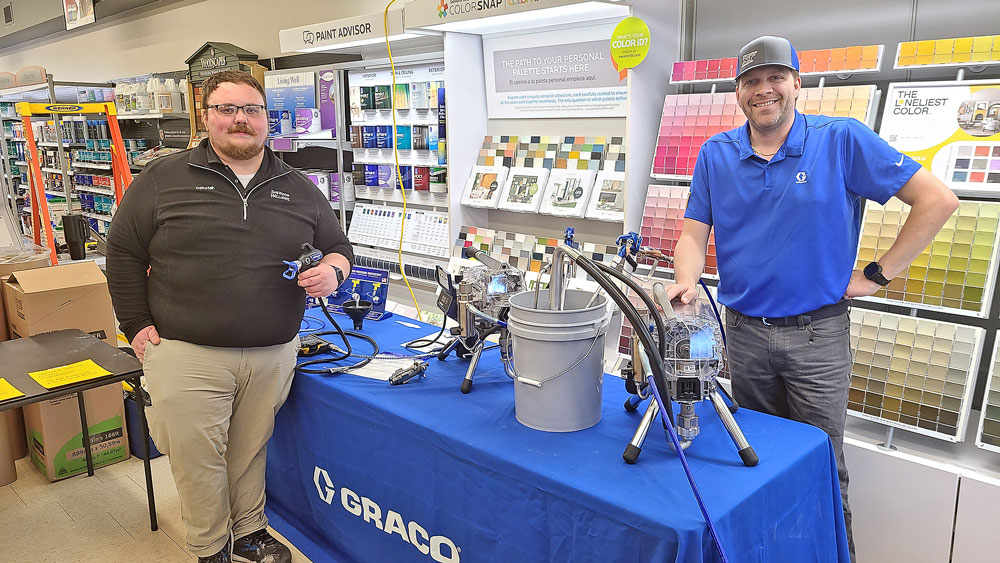State economic development director: Iowa needs to do better job telling its story

By Bob Steenson, bsteenson@charlescitypress.com
Iowa has a lot going for it, but it hasn’t done a great job in spreading that message.
That’s something that Debi Durham said is starting to change.
Durham, the director of the Iowa Economic Development Authority and executive director of the Iowa Finance Authority, was in Charles City Thursday to hold an open forum and to tour several of the businesses in the community.
Accompanying Durham was Beth Balzar, the manager of business development for the IEDA, who has been involved in several projects with Charles City.

Durham gave about a half-hour presentation on what the IEDA and IFA are involved in and talked about increasing efforts to market Iowa, before opening up the session for questions.
Questions from people attending the forum were on housing development, setting community priorities, broadband access and the opioid epidemic.
Among the points Durham made about Iowa during her presentation were some figures that probably didn’t surprise many people:
• Iowa is ranked No. 1 in corn production, pork production and egg production, and No. 2 in soybean production and red meat production.
• Iowa annually produces more than $39 billion in food products.
• Iowa is home to 31 of the top 100 food manufacturers and processors.
But those agriculture-related facts also are part of the stereotype the state must fight, Durham said. When most people think of Iowa they don’t think past the farms.
Even the IEDA marketing materials featured pictures of lush farm fields, she said. They are pretty, but very few people who live outside Iowa are going to move here to farm. The state needs to emphasize all the other things it can offer.
For example, she said:
• More than 1,200 bioscience entities operate in Iowa, and Iowa exports more than $170 million worth of pharmaceutical products to 60 other countries, including from Zoetis and Cambrex in Charles City.
• There are growth opportunities in Iowa in vaccines and immunotherapy, biobased chemicals, medical devices and precision and digital agriculture.
• Iowa is really dominant in the insurance and financial services industries.
• Iowa has the highest percentage of electricity generated from renewable sources.
• Iowa was ranked No. 1 in internet and ultra-fast internet access.
• Iowa has the lowest industrial electricity prices in the Midwest.
And, according to various sources:
• Iowa was ranked in the Top 10 for quality of life.
• Iowa ranks third in living affordability.
• Iowa is the best state in which to pursue the American Dream.
All those facts should make Iowa an attractive place to do business, Durham said. But part of growing the state’s economy is having the workforce.
Iowa needs to hold on to its residents and attract people to the state, she said.
Iowa was ranked No. 1 in workforce quality by one business source, Durham said, but nearly 100 baby boomers retire every day and almost 27 percent of Iowa college students say they are likely to leave Iowa after graduation.
“People don’t see Iowa as a state for job opportunities or recreational opportunities,” Durham said, and talked about a new marketing campaign, thisisiowa.com, that invites people to “Experience the Iowa you never imagined.”
The first question from the audience was from Cathy Rottinghaus, asking about housing initiatives, especially in light of a recent Floyd County housing needs assessment that showed a demand for housing, especially for seniors.
Durham said the state is restarting its workforce housing tax credit program with $25 million available as of July 1, the state’s new fiscal year.
She said originally the program was non-competitive and it created “this incredible waiting list.”
“I literally put a moratorium on it, because we have a $58 million backlog of these tax credits,” she said, with $24 million of that for the rural area program.
The first $25 million will go to wipe out the rural program backlog, she said. The following year the $10 million for rural program will be awarded on a competitive basis, and the $15 million for urban areas will be used for the first two years after this one to get rid of a $29 million backlog there. After that, the $15 million for urban areas will also be competitive.
“There’s really no promise from the Legislature they’re going to fund these things every year. I think there’s an implied assumption we’re going to, but legislators change their minds,” Durham said.
“We know this is a huge issue for communities, and we really are trying to figure out with all our programming how we fill that gap without duplication to actually make things happen,” she said.
Craig Anderson asked Durham if she had any guidance for setting community priorities, saying that Charles City is facing the housing situation, the need for a new high school in the future, the county law enforcement center, etc.
“You’ve got all these issues — you’re trying to be fair to the taxpayers,” Anderson said. “What do you see working in other communities and how do you prioritize all those things while trying to keep the community growing and not get stuck on one issue?”
Durham said it’s a tough position, and one the state is also facing.
“You have all these needs and how do you balance it,” she said. “We have to do them all in tandem, right, because if you don’t have new houses you’re not going to have more kids in your school system, and you’re not going to have more taxpayers.
She focused primarily on the housing situation again.
“I think the best thing to do is, we can bring teams here for housing, like between our CDBG folks and our IFA team, and meet with your community leaders on just your housing situation alone, and figure out what it is we really need to do.”
She also said communities can work on the problem, by buying dilapidated homes, tearing them down and selling them to developers to build new homes on.
That infill lot strategy was one that Tim Fox, executive director of the Charles City Area Development Corp., had highlighted after receiving the results of the county housing needs assessment.
Durham also said businesses need to get involved, for example by helping with down payment assistance for employees. That, also, was a strategy Fox has mentioned.
Mayor Dean Andrews asked about the state’s support for broadband access, noting that Charles City feels it needs a better broadband system, but what it has already makes it not qualify for any state aid.
“I don’t believe government should ever compete with the private sector,” Durham said, but the government does have an incredible amount of broadband infrastructure already in place, through the Department of Transportation and the Iowa Communications Network.
“So why couldn’t we open up that conduit to the private sector or to a municipality to share that, … because in essence it is a utility we’re talking about,” Durham said.
Becky Nixt-Brewer of Cambrex asked what the state is doing to address the opioid crisis and asked, “Is there any conversation about prevention, treatment, rehabilitation, getting those people back into the workforce?”
“This is an issue that Gov. (Kim) Reynolds personally has a real passion for,” Durham said. “The Department of Human Services is doing some of the analysis of what is the problem, where is it stemming from, what kind of policy needs to be done for treatment.”
From the business side, she said, companies are developing software that will do a better job of tracking where the problem is occurring and which providers are responsible for prescribing large amounts of opioid drugs.
“The problem with the opioids, quite frankly, is who’s writing those prescriptions and is there a common theme,” she said.








Social Share